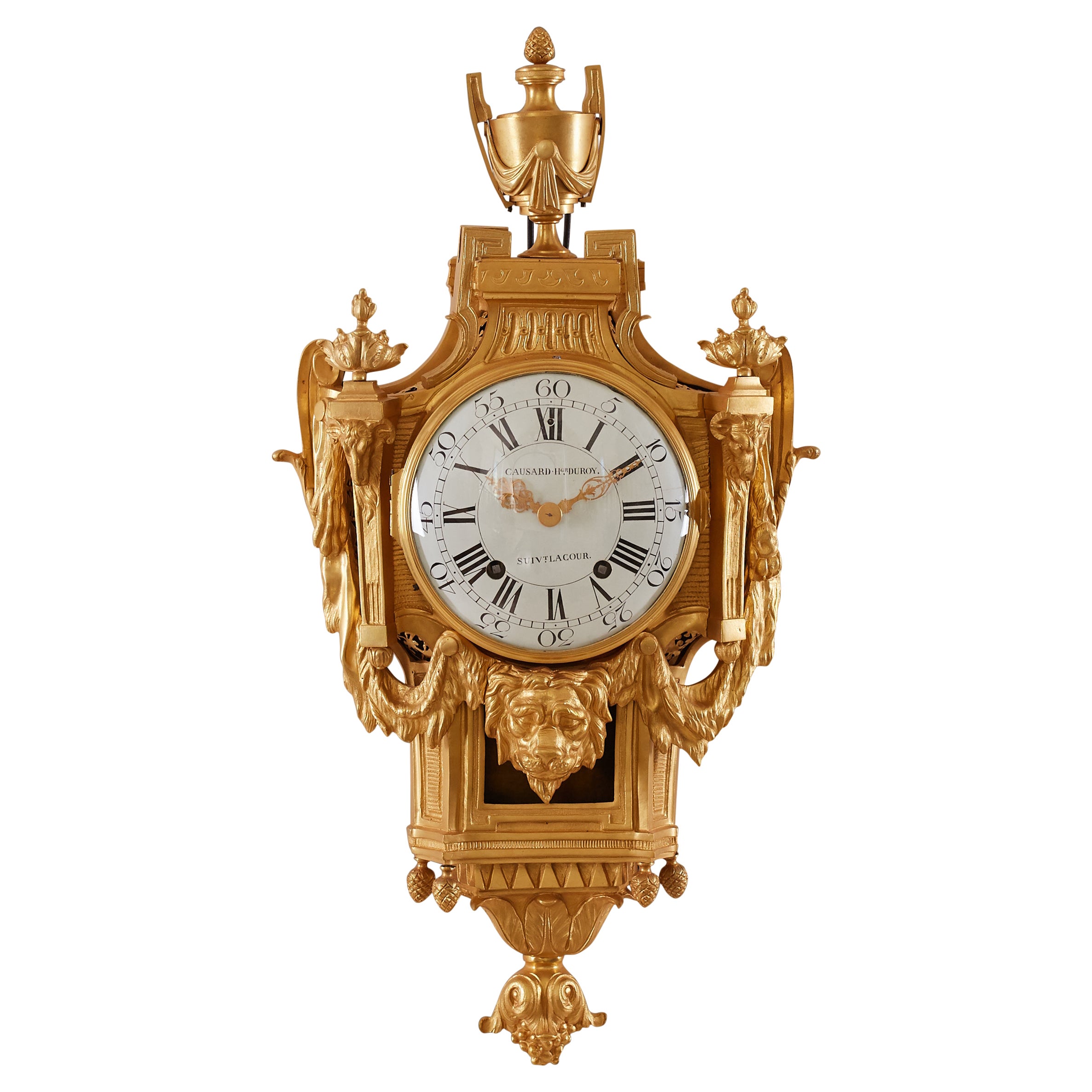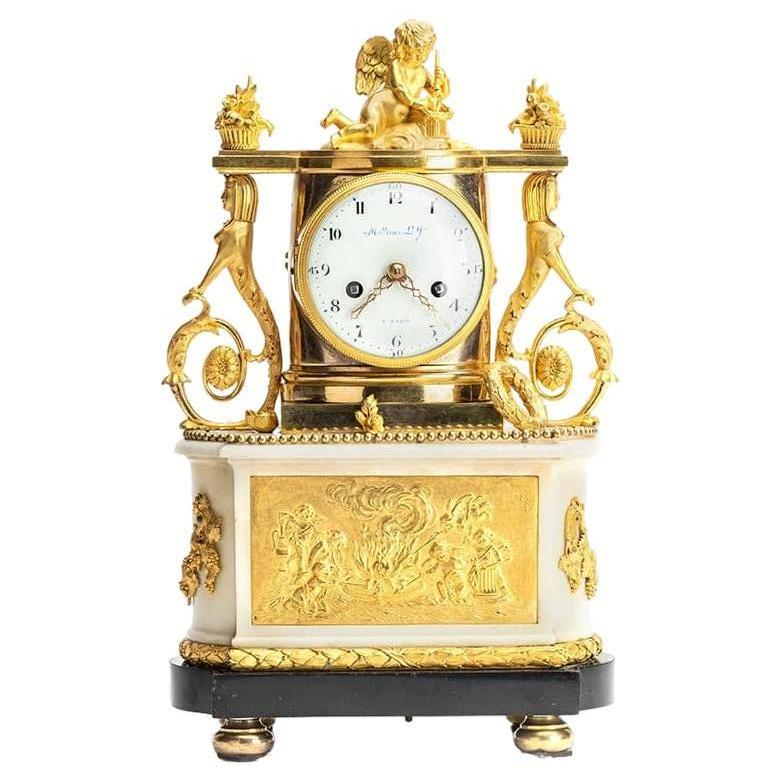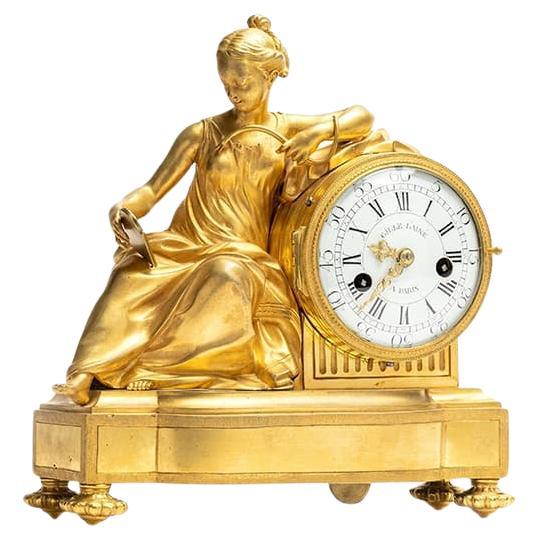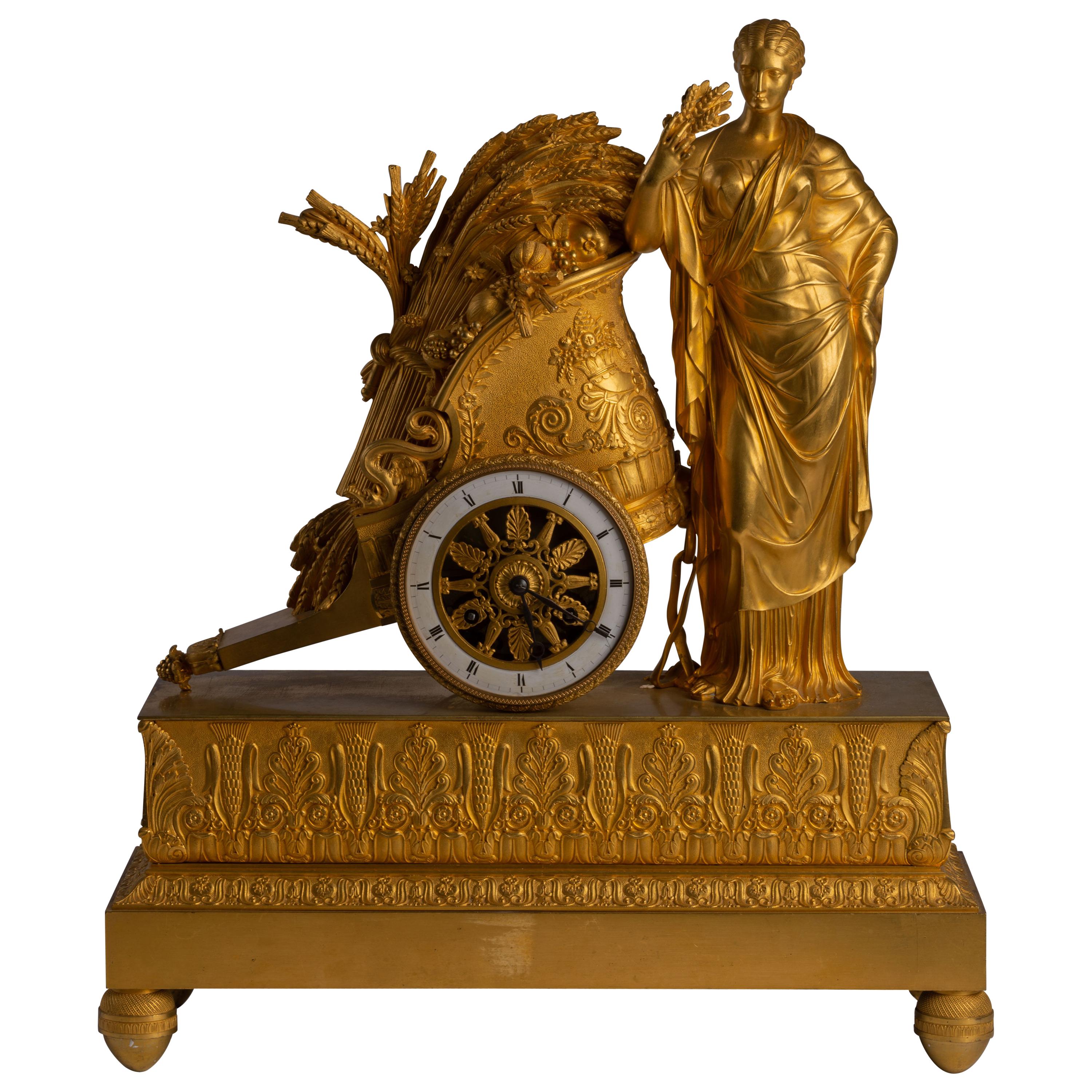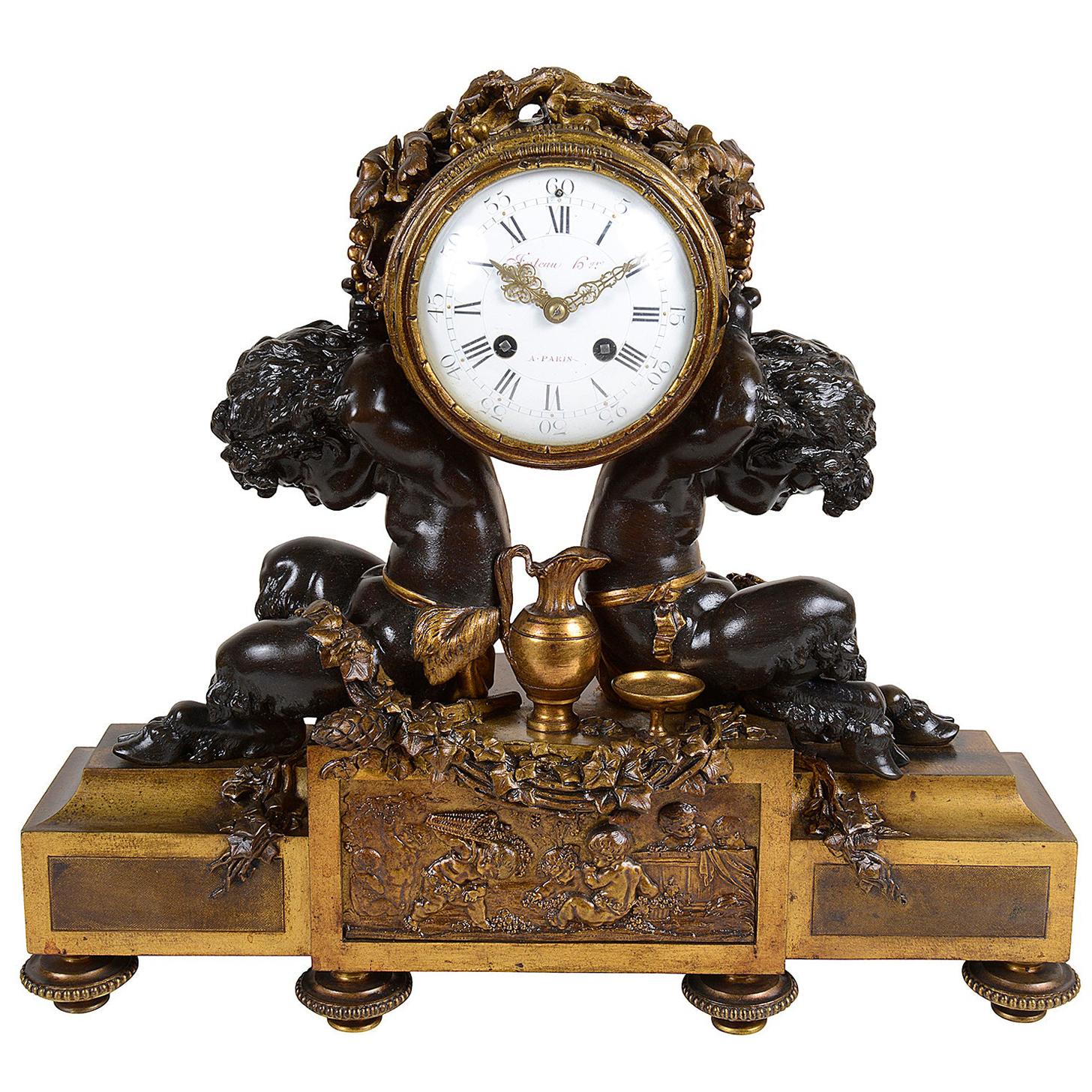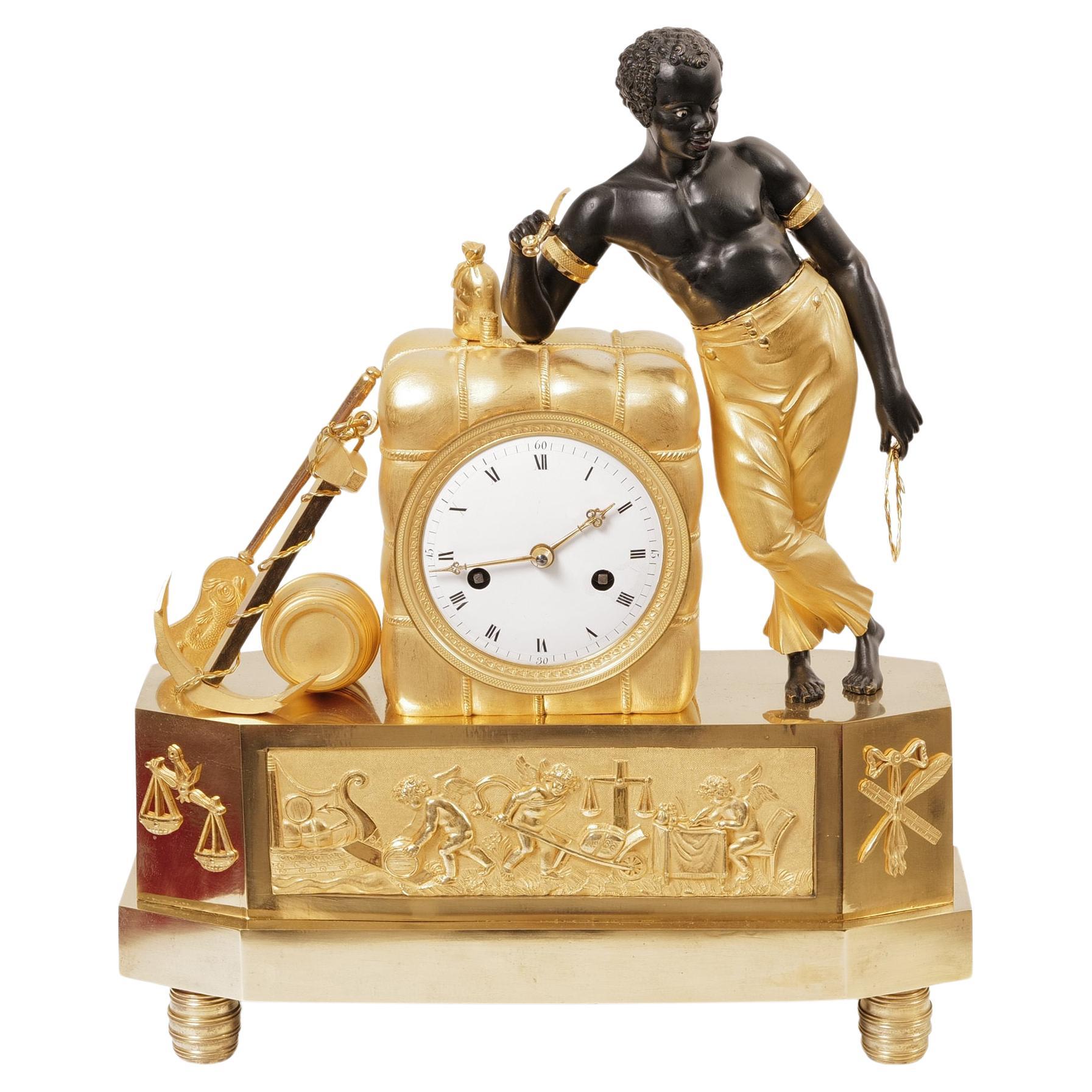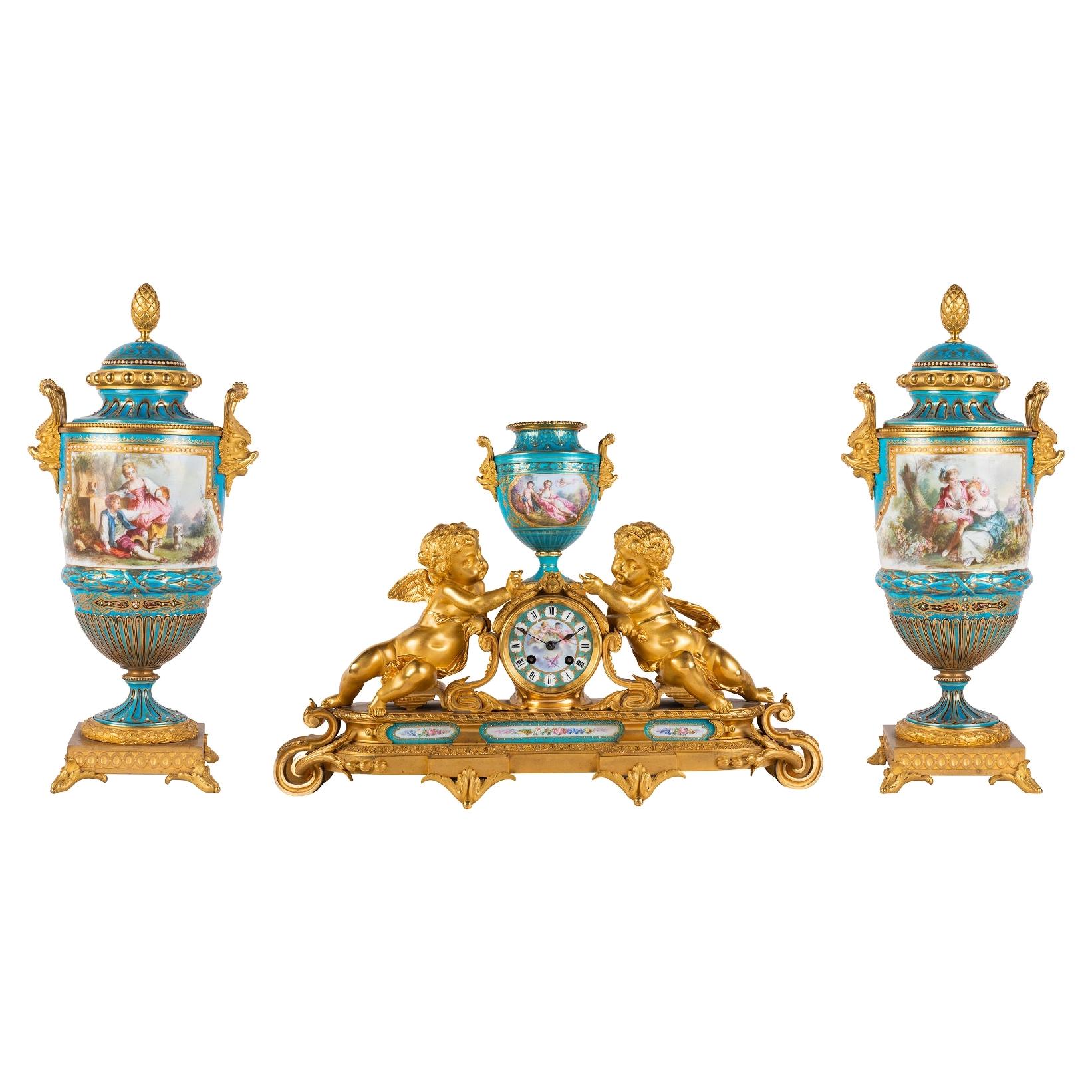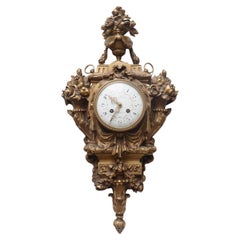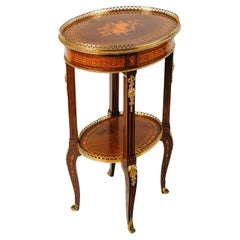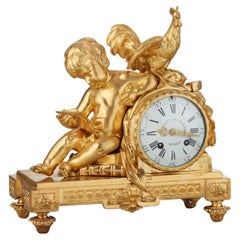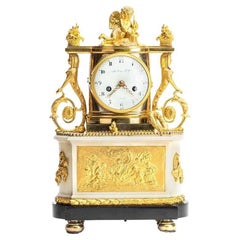
French Louis XVI Style Pendule Au Lion
View Similar Items
Want more images or videos?
Request additional images or videos from the seller
1 of 13
French Louis XVI Style Pendule Au Lion
About the Item
- Dimensions:Height: 13.78 in (35 cm)Width: 8.27 in (21 cm)Depth: 4.73 in (12 cm)
- Style:Louis XVI (In the Style Of)
- Materials and Techniques:
- Place of Origin:
- Period:
- Date of Manufacture:circa 1880
- Condition:
- Seller Location:Saint-Ouen, FR
- Reference Number:1stDibs: LU2612310985961
About the Seller
4.9
Vetted Seller
These experienced sellers undergo a comprehensive evaluation by our team of in-house experts.
1stDibs seller since 2017
57 sales on 1stDibs
Typical response time: 2 hours
More From This SellerView All
- A French Napoléon III Ormolu Cartel Clock by Susse Frères Paris circa 1870By Susse FreresLocated in Saint-Ouen, FRA French 19th Century Cornucopia Gilt-Bronze Cartel, by Susse Frères Paris An Ormolu Cartel in the shape of an escutcheon, with a circular white enamel dial, signed Susse Frères/A Paris, Arabic numerals for the hours and for the minutes. It's bordered by a frieze of pearls and surmounted by a falling laurel knot with a drapery in the lower part and flanked by cornucopias adorned with flowers and fruits. Rectangular base decorated with a garland of knotted flowers dying in a tapered, fluted barrel and damping, in the upper part, a flowery Medici vase. Louis XVI Style Circa 1870 Original gilding uncleaned The Susse company, a worldwide reknown foundry, began to cast pieces as soon as the first half of the 19th Century. Awarded medals...Category
Antique 1860s French Louis XVI Wall Clocks
MaterialsOrmolu
- A French 19th Century Louis XVI Style Side Table, circa 1880Located in Saint-Ouen, FRA very good quality 19th century French charming two-tier side table with a single frieze drawer parquetry inlaid, designed with Allegories of Geography and Astronomy, with pierced t...Category
Antique 1880s French Louis XVI Side Tables
MaterialsOrmolu
$3,941 Sale Price25% Off - French 19th Century Aesthetic Movement Chinoiserie Timepiece by Susse FrèresBy L'Escalier de Cristal, Susse FreresLocated in Saint-Ouen, FRA very fine bronze brown and gilt patina French 19th century timepiece in the oriental Chinese taste. In an Archaic style bell with molded relief dragons circling body, surmounted by...Category
Antique 1860s French Chinoiserie More Clocks
MaterialsBronze
$4,106 Sale Price31% Off - A French 19th Century Pair of Louis XVI Style Large Curule StoolsBy Maison Jansen, Georges JacobLocated in Saint-Ouen, FRA French 19th Century Pair of Large Rectangular Curule Stools Gilt and carved wood, decorated with interlace frieze, acanthus leaves and rosaces The 4 feet linked by a gadrooned stretcher. Louis XVI Style Napoléon III Period In the manner of Georges Jacob (1739-1814) Attributed to Maison Jansen Circa 1900 Used Petit Point Tapestry Upholstery Maison Jansen, the French luxury: Opulence, refinement, audacity of style marriages… so many words agree with Maison Jansen. Through this name, a whole era sounds like a reminder of a certain French chic… Some names evoke immutable images, atmospheres... Like Jansen, for example. Let’s close our eyes… The 1960s and 1970s are at their peak. France is doing well. It is a country of full employment where everything seems possible. Within the international Jet Set, a carefree crowd of movie stars, public figures, literary idols and crowned heads, we love the Maison Jansen, its taste for styles struck with a good quality exuberance, and its brilliant side. It all began in 1880, when the Dutchman Jean Henri Jansen founded the epon-ymous house in Paris. Jansen is part of the continuity of these world-famous furniture manufacturers and companies that operated under the Second Empire and at the time of the Universal Exhibitions, as the ‘Escalier de Cristal’ teaches. At that time, the Union Centrale des Beaux-Arts appliqués à l'Indus-trie and the Société du musée des Arts Décoratifs merged to form the Union Centrale des Arts Décoratifs. Supported by both gallery owners, collectors and manufacturers, this organi-zation gives the «la» to the whole profession, and in the prevailing politico-ideological slump (France was defeated by Prussia in 1871 and Napoleon III is in exile), the ‘Union Centrale des Art Décoratifs’ focuses production on the celebration of past styles. While this nostalgia evokes memories of an era that we imagine more stable, an innovative exoticism will be all the rage: the reign of Turkish style and Japonisme. The Jansen house masterfully rushed into the «exotic» trend, but quickly de-veloped a style derived from the ornamental splendor of the eighteenth, then a little later, so-called «imperial» styles mainly intended for royal families. Af-ter the First World War, J.H Jansen was joined by the cartoonist Albert Cazes, by Stéphane Boudin and by Pierre Delbée, who successively directed the house when it disappeared in 1929. At the end of the Kennedy era, Boudin complete-ly redecorated the White House, at the request of the First Lady, Jackie, who had fallen in love with his work after discovering it at Malmaison. In 1971, Jansen joined forces with Leleu-Deshays and continued its quest for excellence. From 1969 to 1979, the dandy decorator Serge Robin took the reins of the house, granting it an eclectic and luxurious style: he revisited the great eras of French art, from the Renaissance to Louis XVI, by modernizing them with more contemporary pieces in Plexiglas or wrought iron. His recomposed and sophisticated style met with resounding success. When Jackie Kennedy, who became the wife of the great Greek shipowner Aristotle Onassis, moved to France, the young architect married Louis XVI-style furniture to modernist designs from the 1950s. When the Shah of Iran decided to celebrate the 250th anniversary of the Per-sian Empire in 1971, Serge Robin and his teams turned to the grandiose and ephemeral setting of Persepolis. A hundred semi-trailers then left the work-shops on Rue Saint-Sabin to reach Tehran. At the same time, Princess Soraya of Iran commissioned her a sumptuous palace for Avenue Montaigne, the princes Faisal bin Fahd of Arabia and Mubarak Al-Sabah, and the Agnelli snatched it. On the French side, he puts his talent at the service of Brigitte Bardot, for whom he completely revamped the Madrague and the Lannes boulevard. Serge Robin embodies all the audacity of the name Jansen with the most im-probable weddings. With him, Plexiglas tables, Japanese chairs from the 50s, gold thread curtains, zebra sofas...Category
Antique 1890s French Louis XVI Stools
MaterialsTapestry, Wood, Giltwood
- A French ‘Chariot’ Three-pieces Clock Garniture attributed to F.Linke circa 1890By François LinkeLocated in Saint-Ouen, FRA French Ormolu and Patinated-Bronze ‘Chariot’ Three-pieces Clock Garniture Attributed to François Linke (1855 - 1946), Paris, Late 19th/ Century The clock representing a putto on ...Category
Antique 1890s French Napoleon III Mantel Clocks
MaterialsBronze, Ormolu, Enamel
- Fannières Frères Desk Clock "Time Allegory" circa 1860By Fannière FrèresLocated in Saint-Ouen, FRFannières Frères Desk Clock Time Allegory Chased gilt and silvered bronze Desk Clock With an allegorical theme of Time in the form of a cherub suppor...Category
Antique 1860s French Louis XVI Table Clocks and Desk Clocks
MaterialsMarble, Bronze, Ormolu
You May Also Like
- Early Louis XVI penduleBy Charles Du Tertre 1Located in HAARLEM, NLCharles Du Tetre a Paris . One of the most famous Paris clock makers fom the second half of the Eighteenth Century. Master clockmaker since 1758. He deliver...Category
Antique 18th Century French Mantel Clocks
MaterialsBronze, Ormolu
$15,110 - Louis XVI Style Lion Mask Wall ClockLocated in Warsaw, PL“A Louis XVI style lion mask wall clock” This fire gilt bronze Louis XVI style lion mask wall clock was one of the most outstanding masterpieces, which was originally made by Edme-J...Category
Antique 18th Century French Louis XVI Antiquities
MaterialsBronze
- Louis XVI pendule by Molliens le Jeune a ParisLocated in HAARLEM, NLBeautiful pendule made by: Louis-François-Amable Molliens who was a clockmaker whose workshop was recorded as being, successively, in the rue Saint-Honoré around 1800, then in the passage du Grand-Cerf between 1806 and 1815 (see Tardy, Dictionnaire des horlogers français, Paris, 1971, p. 469) This model is rare because of the strong facade and looking at the base you see detailed gilded relief...Category
Antique Mid-18th Century French Louis XVI Mantel Clocks
MaterialsMarble
- Louis XV bronze pendulum clock “Pendule au Sanglier”Located in HAARLEM, NLAn extremely rare and important splendid Louis XV bronze pendulum clock “Pendule au Sanglier”, with half hour/hour self strike and musical movement with 9 tunes that activates on the...Category
Antique Early 18th Century French Mantel Clocks
MaterialsBronze, Enamel, Ormolu
Price Upon Request - Romantic Louis XVI pendule by Gille l’Aîné à ParisLocated in HAARLEM, NLA romantic early striking and classical LOUIS XVI pendule. The round white enamel dial, signed “Gille l’Aîné à Paris”, indicates the Roman numeral hours and the Arabic numeral five-m...Category
Antique 18th Century French Louis XVI Mantel Clocks
MaterialsBronze
- Empire Ormolu Mantel Clock 'Pendule au char'Located in Kittery Point, METhe rectangular base decorated with a wheat and foliate frieze and raised on four ball feet, the goddess of agriculture Ceres standing while leaning against a Roman chariot with harv...Category
Antique Early 19th Century French Empire Mantel Clocks
MaterialsBronze
Recently Viewed
View AllMore Ways To Browse
Pendule Louis Xvi
Brass Antique Clock
Brass Antique Clocks
Brass Clocks Antique
Brass Antique Clocks Brass Antique Clocks
Fine Clock
Set Of Clocks
Early 19th Century French Empire
Clock Pendulum
Pendulum Clock
Gilt Bronze Clock
Antique Gold Clock
19th Century French Bronze Clocks
Antique French Clock Dials
Pendulum Clock Used
Used Time Clocks
Antique Clock Base
Antiques Antique Clock

